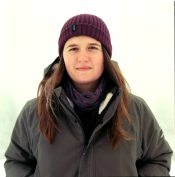Marcin Kolanowski
Member
Hey guys,
I've recently came back from a holiday in the alps and developed my negatives at home. After scanning the negs I've realised that some of them have a strong magenta colour cast and a very heave grain. I suspect its UV rays as I didn't have a UV filter attached to the lens. Please see the images below - both images were shot one after another. I had a couple of the bad ones on the roll and they both had a bit of sky included in the frame thus my thinking its the UV rays.


I used Epson V550 scanner and Tetnal C-41 developer..
I've recently came back from a holiday in the alps and developed my negatives at home. After scanning the negs I've realised that some of them have a strong magenta colour cast and a very heave grain. I suspect its UV rays as I didn't have a UV filter attached to the lens. Please see the images below - both images were shot one after another. I had a couple of the bad ones on the roll and they both had a bit of sky included in the frame thus my thinking its the UV rays.


I used Epson V550 scanner and Tetnal C-41 developer..













